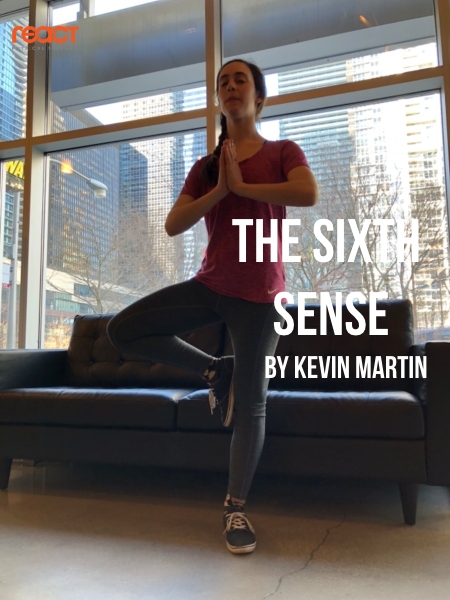The Sixth Sense – Proprioception

Our five senses allow us to see, hear, smell, taste, and touch. They enable us to learn and understand the world around us. But we also have another basic sense. This “sixth sense” allows us to determine where our body is moving in space. It is essential to our normal execution of basic movements. This additional sense is the reason we can bring popcorn to our mouth without looking or walk to the bathroom in darkness at night without falling. This sense, which many of us confuse with intuition, is actually known as proprioception.
When we move in any direction, there are receptors in our limbs such as muscle spindles and joint receptors that detect limb position and movement and send this information via neurons to your brain. Your brain then takes this input along with other sensory information from your eyes and inner ears to inform you of how all your body parts are positioned and moving through three-dimensional space. Your brain responds by sending instructions back out to your muscles. The entire process is completed in milliseconds.
These signals from the brain to the larger muscles of your legs and trunk keep you steady anytime you are upright and work overtime when you are on unsteady surfaces, such as ice. During these “dynamic balance” situations, your brain orchestrates tiny muscle micro-adjustments to counteract positions causing the unsteadiness. These quick balance adjustments not only keep us from falling over throughout the entire day, but they also allow you to move dynamically in athletics. We see this every weekend in the fall when a football player tiptoes down the sideline for a touchdown while avoiding being tackled.
Athletes often overlook the importance of including balance and proprioception training into their workouts, instead focusing their efforts on strength and power development. Stability is essential for any athlete to thrive and it can be the factor that separates the great athletes from their competition. And while it is clear that certain athletes are naturally gifted with incredible body awareness- think of the Giants’ David Tyree in Super Bowl XLII- everyone can enhance this skill with practice. One such way to incorporate proprioception training is by using a BOSU device in your workouts. The simple switch of periodically performing BOSU squats instead of weighted squats can produce drastic results for those seeking to improve their proprioception.
Even more than athletes, the group that may benefit most from proprioception training is aging adults. Weak proprioceptive sense in our legs has been shown to have a high correlation with falling as an older adult. As we age, deterioration in our proprioceptor sensitivity and the speed at which our muscles communicate with the brain gradually declines. Consequently, older adults may not be able to detect postural disturbances and sense where their feet are in space. This, along with loss in strength, is a major reason why one-third of all people over the age of 65 report a fall in any given year.
Fortunately, multiple studies have shown the positive effects of incorporating proprioceptive and postural stability training in reducing future falls. This is one of the major reasons why React Physical Therapy cautions against using machines where you sit for workouts. When you sit, your proprioceptors in your feet do not have to work. Instead, moving more dynamically when you exercise by incorporating moves like lunges, squats, and single-leg stance exercises is immensely more beneficial to improving your proprioception. At the same time, closing your eyes while balancing in a safe environment (such as by a counter or corner wall) will help you to improve your proprioception and overall balance. If you do not feel safe or have a history of falls a physical therapist can evaluate you and create a safe and effective protocol for you.
Whether you are an athlete striving to gain an advantage over the competition or an adult concerned about your lifestyle as you age, improving your proprioception can pay incredible dividends.